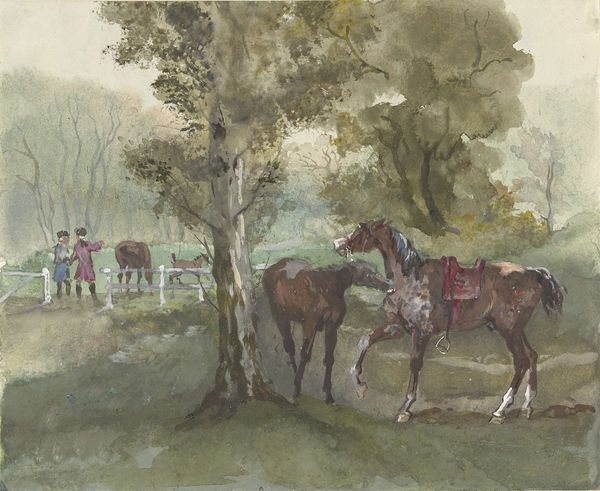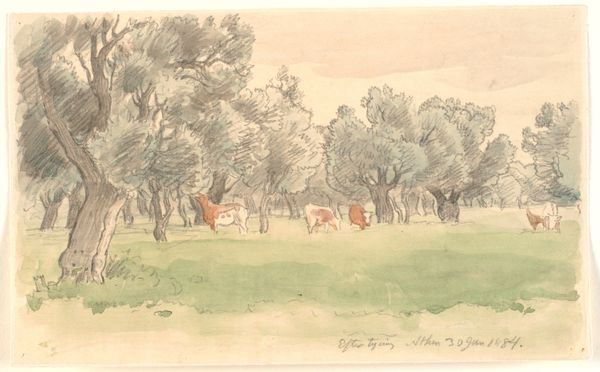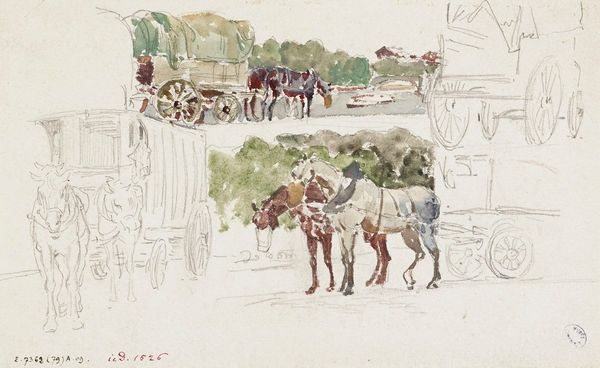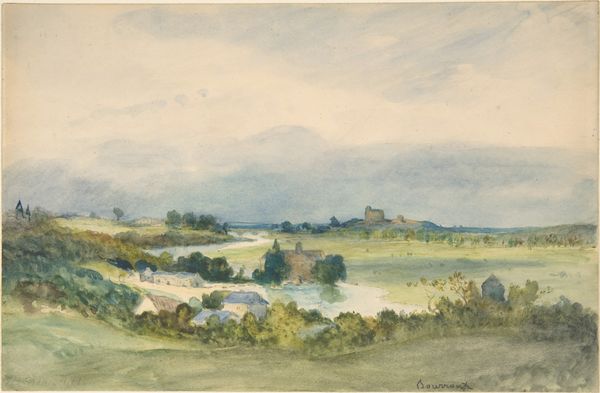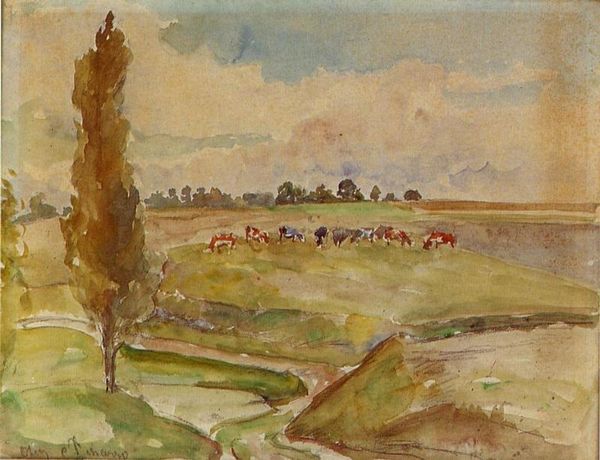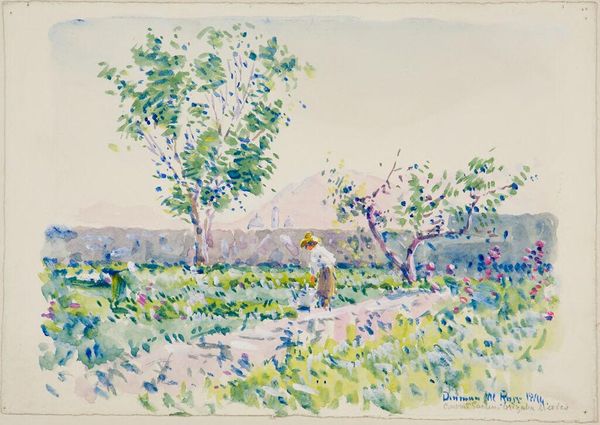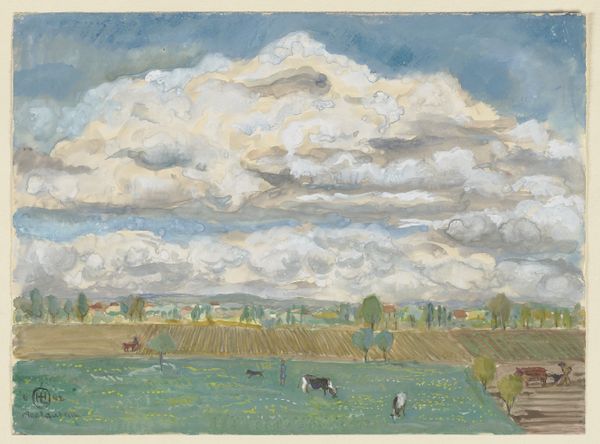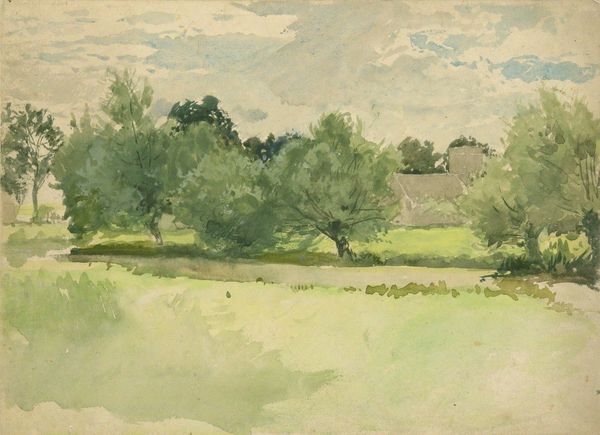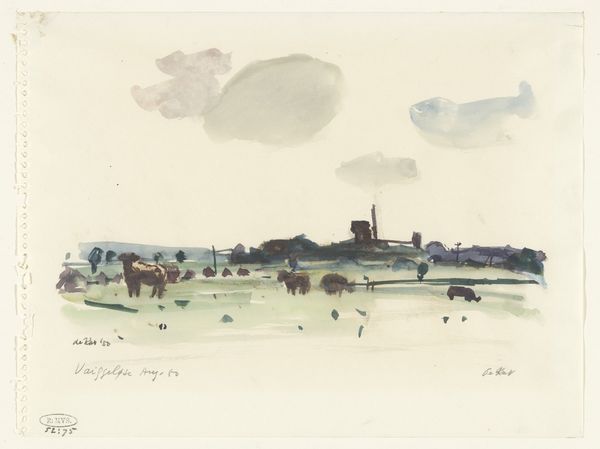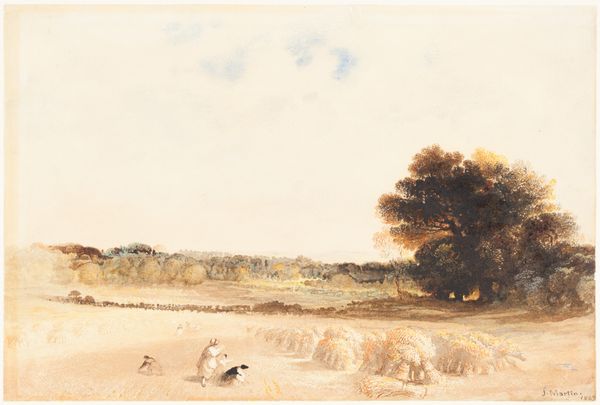
#
landscape illustration sketch
#
water colours
#
possibly oil pastel
#
handmade artwork painting
#
oil painting
#
acrylic on canvas
#
watercolour illustration
#
mixed medium
#
watercolor
#
warm toned green
Copyright: Public domain
Editor: This is "Study" by Hugo Mühlig. It looks like it's rendered in watercolors and possibly oil pastel. It’s giving me a very idyllic, pastoral feeling. What do you see in this piece from a material perspective? Curator: What strikes me immediately is the depiction of labor. Look at the horse and the figure plowing – the means of agricultural production are laid bare. We see the materials – earth, water, pigments – being actively transformed through work. Does this image celebrate or critique that labor, I wonder? Editor: That's interesting. I hadn't really thought about it in terms of labor. I guess I was caught up in the pretty colors. It feels almost romantic. Do you think Mühlig was making a statement about the changing role of agriculture at the time? Curator: It’s possible. Without knowing the precise date, it’s hard to pinpoint a specific historical moment. But we can see the materiality of the landscape – the cultivated field, the natural trees – being shaped and controlled. The handmade nature of the artwork itself adds another layer, highlighting the labor involved in artistic creation as well as agricultural work. Were the artist's materials easily accessible, or luxurious? This might influence the social statement being presented. Editor: That's a good point about the labor of the artist too. Seeing them both side-by-side kind of changes the feel of the artwork completely. I'm not just seeing a landscape, I'm seeing the act of *making* a landscape. Curator: Exactly. It's about understanding the material processes that underpin both the art and the scene it depicts. Editor: This has made me consider landscape art so differently! Thanks for offering this material view! Curator: It's been a pleasure to delve into these production aspects with you, and understand this painting with a broader understanding of how labor influences its impact.
Comments
No comments
Be the first to comment and join the conversation on the ultimate creative platform.
